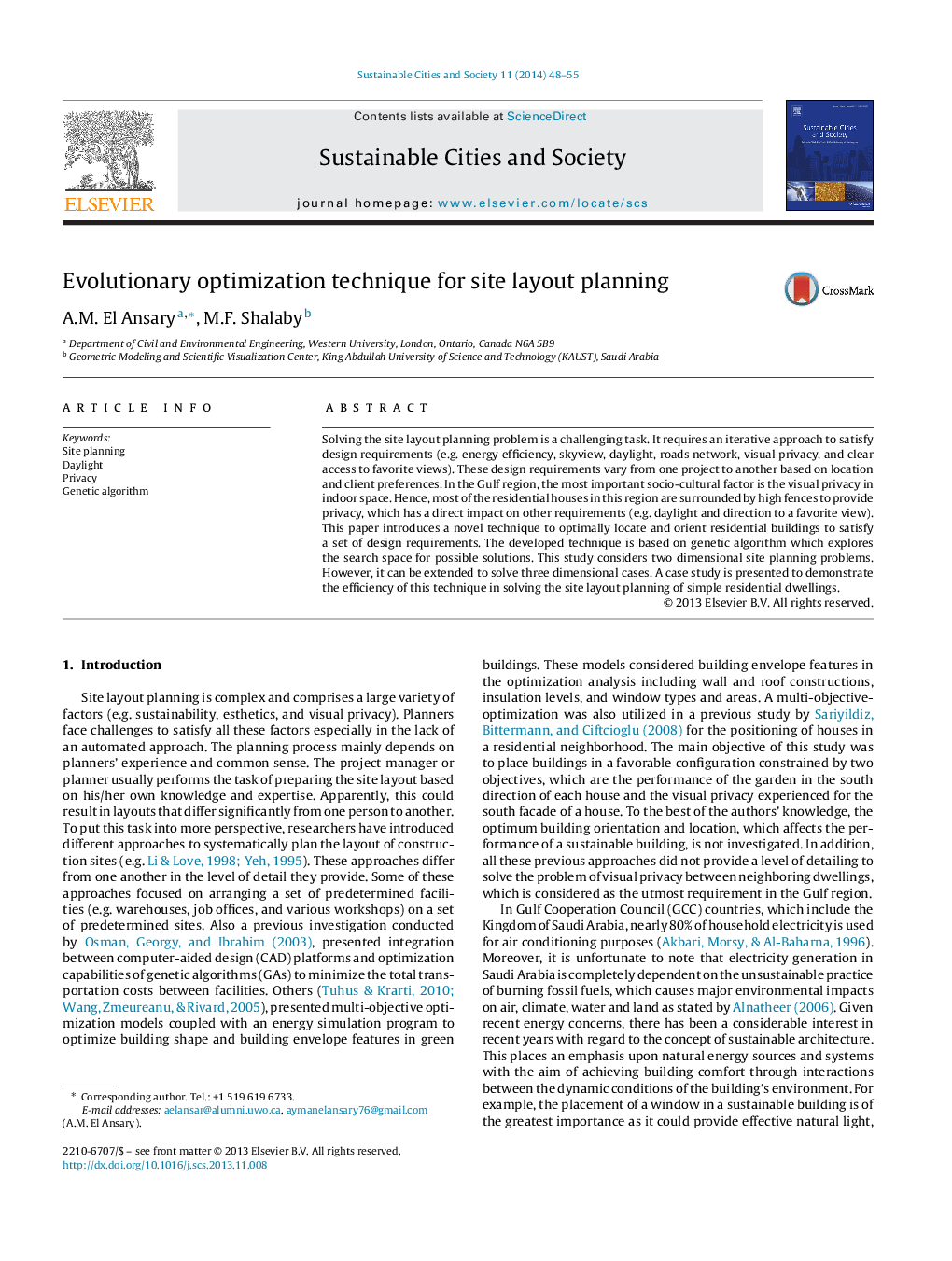| کد مقاله | کد نشریه | سال انتشار | مقاله انگلیسی | نسخه تمام متن |
|---|---|---|---|---|
| 308164 | 513532 | 2014 | 8 صفحه PDF | دانلود رایگان |
• A novel hybrid technique for layout planning of residential houses has been developed.
• A genetic algorithm technique built in-house is coupled with the object oriented features of MATLAB.
• The developed technique explores the search space for possible solutions.
• Designers and architects can easily interact with the developed numerical tool to generate alternative sketch plans.
• The developed technique is applied for two dimensional problems.
Solving the site layout planning problem is a challenging task. It requires an iterative approach to satisfy design requirements (e.g. energy efficiency, skyview, daylight, roads network, visual privacy, and clear access to favorite views). These design requirements vary from one project to another based on location and client preferences. In the Gulf region, the most important socio-cultural factor is the visual privacy in indoor space. Hence, most of the residential houses in this region are surrounded by high fences to provide privacy, which has a direct impact on other requirements (e.g. daylight and direction to a favorite view). This paper introduces a novel technique to optimally locate and orient residential buildings to satisfy a set of design requirements. The developed technique is based on genetic algorithm which explores the search space for possible solutions. This study considers two dimensional site planning problems. However, it can be extended to solve three dimensional cases. A case study is presented to demonstrate the efficiency of this technique in solving the site layout planning of simple residential dwellings.
Journal: Sustainable Cities and Society - Volume 11, February 2014, Pages 48–55
